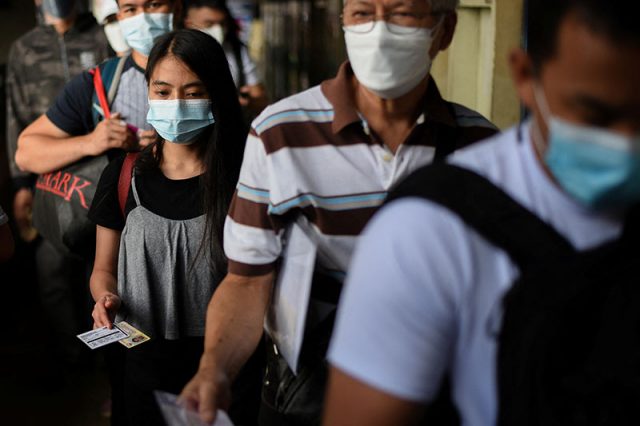
Filipinos are reminded of the risk of voluntary face mask use outdoors after the government has finalized easing its policy about it.
President Ferdinand Marcos Jr on Monday signed Executive Order No. 3, which allows the voluntary use of face mask outdoors following specific conditions:
- Outdoor settings must not be crowded and physical distancing consistently observed
- Area must have good ventilation
Individuals who are not yet fully vaccinated, senior citizens, and those who are immunocompromised are still “highly encouraged” to keep their masks on outdoors.
The order additionally said that the protective equipment must still be worn in the following areas:
- In indoor public and private establishments
- In public transportation by land, air, or sea
- In outdoor settings where physical distancing cannot be maintained
EO No. 3 takes effect immediately upon its publication in the Official Gazette.
The order comes after the Inter-Agency Task Force for the Management of Emerging Infectious Diseases (IATF-EID) proposed the voluntary wearing of face masks outdoors last week.
IATF’s recommendation came after Cebu City‘s executive order on face mask use gained buzz.
The Department of Health has emphasized that wearing of face mask outdoors is safer.
RELATED: ‘Mas ligtas’: DOH reminds masking is still safer outdoors after IATF proposal
Following the EO’s release, some Filipinos reminded the public of the risks of mask removal.
“As shared by @DrTonyLeachon, Philippines remains laggard in the booster shots yet optional masking already lol,” market surveillance analyst John Paul Tanyag tweeted, tagging the account of former National Task Force Against COVID-19 special adviser Tony Leachon.
Tanyag accompanied his tweet with a screenshot of a graph from Our World in Data showing some countries which have administered COVID-19 boosters per 100 people.
As of September 12, its map data showed the Philippines lagging behind countries like Australia, China, Vietnam, Thailand and Malaysia, among others.
Cough etiquette
In relation to the mask policy, other Twitter users claimed to encounter citizens who are not practicing safety protocols in public.
“Oh hell no, I’m keeping it on. Just got coughed on twice two days ago and no, no, no, I am not risking it,” an online user wrote in response to the reports.
The DOH advises everyone to practice proper cough etiquette as part of the minimum public health safety protocols.
The public is advised to “cover [their] mouth and nose using tissue or sleeves or bend of the elbow when coughing or sneezing.”
They must also “move away from people” when they do so.
This is because COVID-19 can be spread through respiratory droplets or aerosols containing viral particles, making tight-fitting face masks such as KF94 or N95 the preferred ones by experts.
Other Twitter users, meanwhile, shared about knowing people who have recently become infected.
“Yikes. Families and friends have been testing positive lately and then this?” a nutritionist-dietician wrote in response to the easement of face mask use.
OCTA Research Group, an independent entity monitoring the COVID-19 pandemic, on Sunday said that there is a “slow uptick” in COVID-19 cases in the National Capital Region.
It added that the NCR’s reproduction rate has increased to 1.11 as of September 7. It was only 0.93 on August 31.
The reproduction rate is the number of people that a COVID-19 case can infect. To indicate that the transmission is decreasing, experts said the figure should be less than 1.









